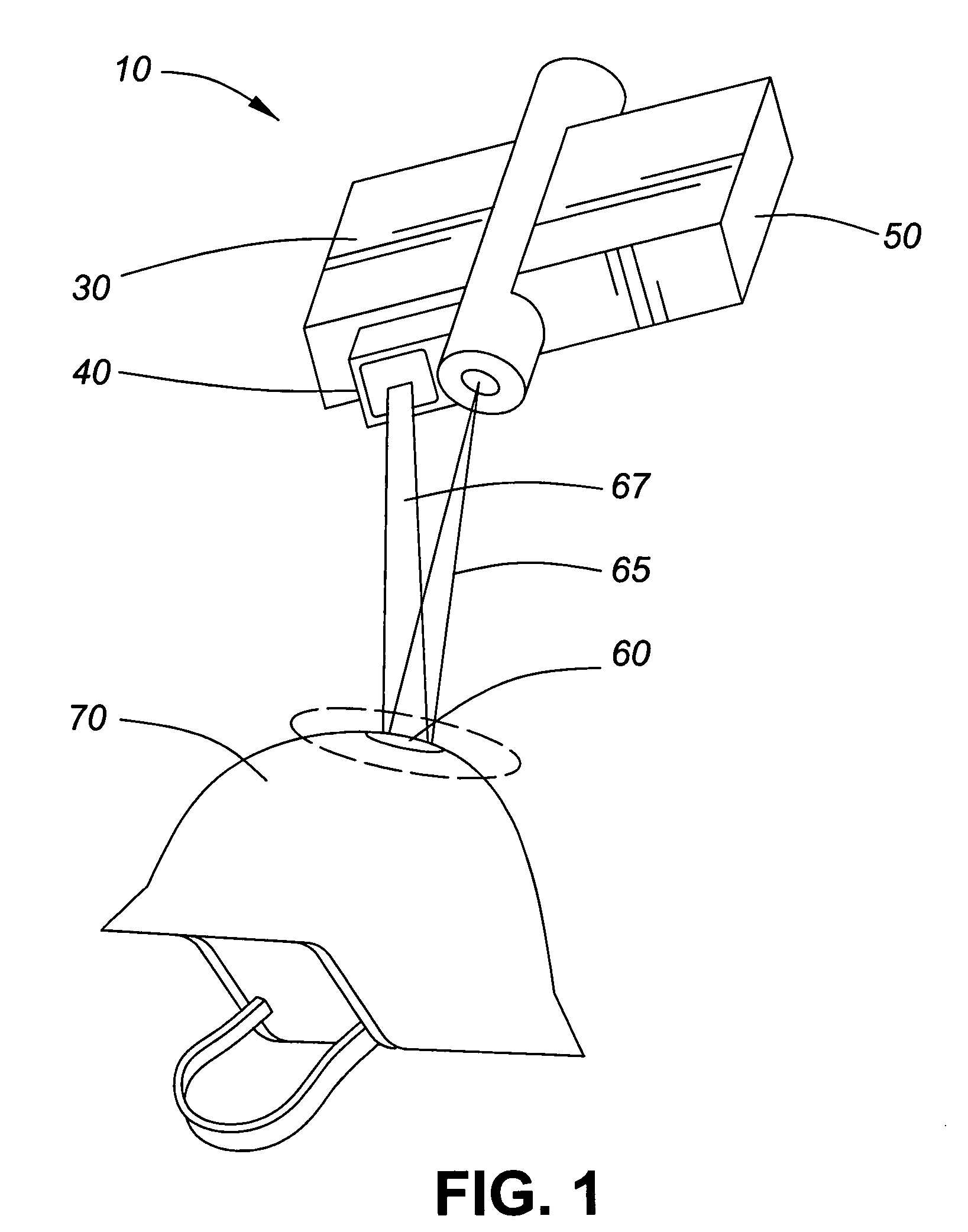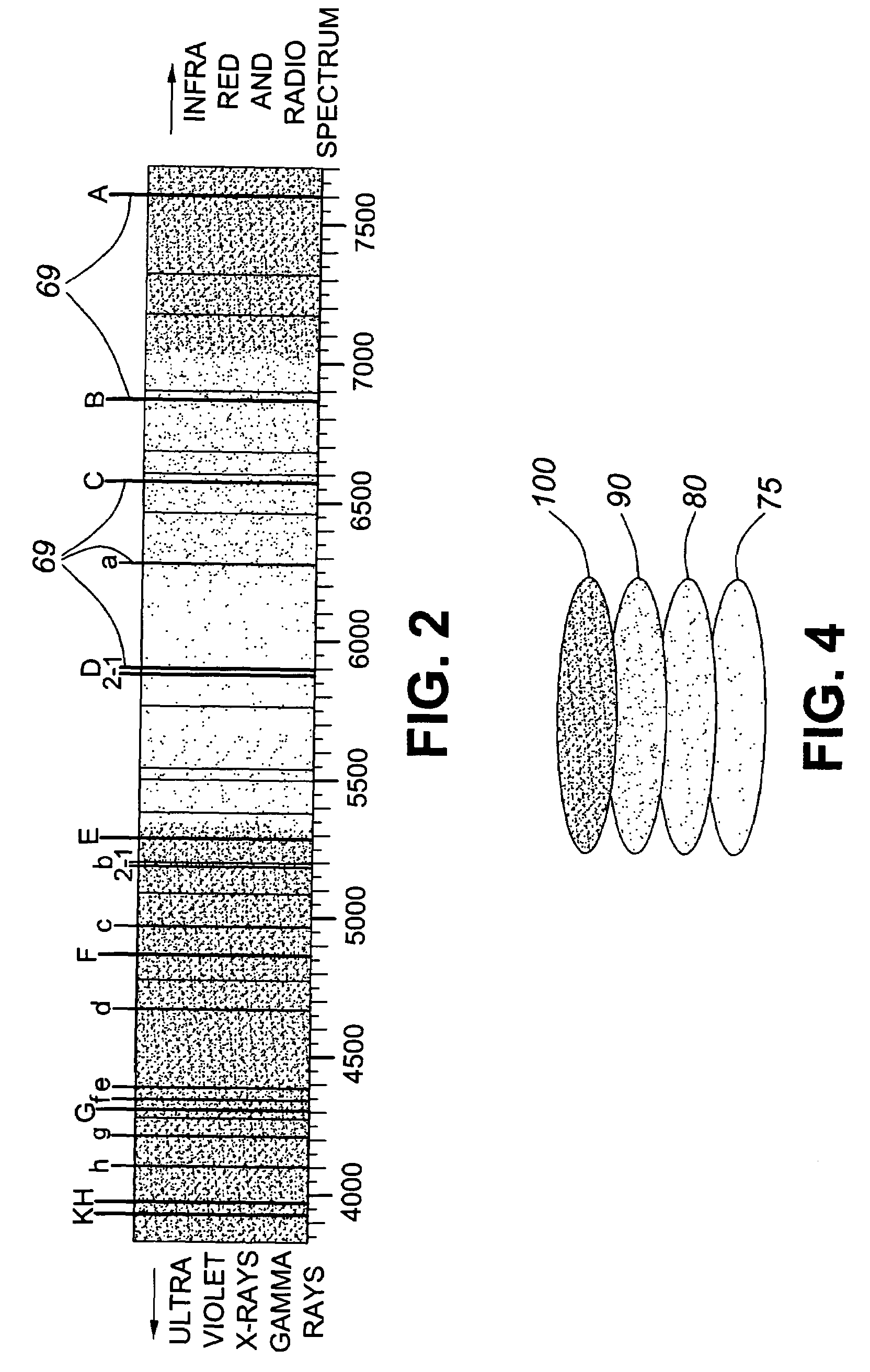Object identification using quantum dots fluorescence allocated on Fraunhofer solar spectral lines
a technology of quantum dots and solar spectral lines, applied in the field of optical identification systems, can solve the problems of increasing the casualty rate of so-called “friendly fire” incidents, falling into disuse, and unable to identify friendly from unfriendly forces, and achieve the effect of convenient deploymen
- Summary
- Abstract
- Description
- Claims
- Application Information
AI Technical Summary
Benefits of technology
Problems solved by technology
Method used
Image
Examples
Embodiment Construction
[0027]Referring to FIG. 1, a partial optics based identification system 10 is illustrated. The partial system 10 has a laser 20, a spectrum sensor 30, a spectral filter 40, and a data processing module 50. The rest of the system consists of a coating 60 deposited on a piece of equipment 70, in this case a military combat helmet.
[0028]The system functions with the laser 20 providing an optical beam 65 which hits the coating 60. This causes the coating to fluoresce and emit a corresponding electromagnetic radiation (fluorescence) 67. The radiation 67 is picked up by the spectrum sensor 30 after being filtered by the spectral filter 40. The spectrum sensor 30 then transmits what is detected to the data processing module 50. The data processing module 50 then processes or decodes any data encoded in the fluorescence. Based on the decoded data, the data processing module 50 may then send an appropriate signal to an external module or to an end user.
[0029]To overcome the issue of sunlight...
PUM
 Login to View More
Login to View More Abstract
Description
Claims
Application Information
 Login to View More
Login to View More - R&D
- Intellectual Property
- Life Sciences
- Materials
- Tech Scout
- Unparalleled Data Quality
- Higher Quality Content
- 60% Fewer Hallucinations
Browse by: Latest US Patents, China's latest patents, Technical Efficacy Thesaurus, Application Domain, Technology Topic, Popular Technical Reports.
© 2025 PatSnap. All rights reserved.Legal|Privacy policy|Modern Slavery Act Transparency Statement|Sitemap|About US| Contact US: help@patsnap.com



